As humans, we have been dancing since the dawn of time. From ancient ritualistic dances to modern-day music videos, dancing has always been an integral part of our lives. However, one form of dance that often gets overlooked is folk dance. What exactly is folk dance, and how can it benefit our health? In this article, we will explore the physical and mental health benefits of folk dance, its potential as a form of therapy, and tips for getting started. Whether you are a seasoned dancer or have never danced before, join us as we discover the wonders of folk dance.
Physical Benefits of Folk Dance
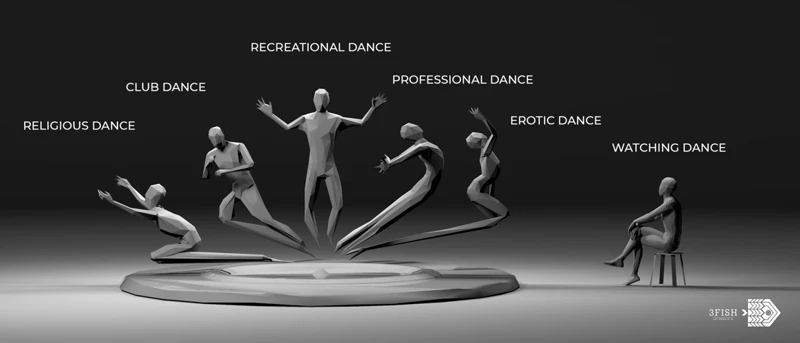
Folk dance is a form of cultural expression that can bring various physical benefits to those who participate. These benefits include improvements to cardiovascular health, increased flexibility and strength, as well as weight management and risk reduction of obesity. Folk dance also has mental health advantages, including stress reduction, improved mood, and cognitive function. In this section, we will explore the physical benefits of folk dance, which have been integral to the tradition’s long-standing popularity worldwide. To get a better understanding and appreciation of folk dance, follow this link to read about the origins and history of folk dance.
Improved Cardiovascular Health
Regular folk dance practice can have a significantly positive impact on cardiovascular health, particularly for those who engage in high-energy styles of dance. The following table outlines some of the key cardiovascular benefits of folk dance:
| Benefit | Description |
|---|---|
| Increased Heart Rate | During a folk dance session, the heart rate is increased due to the physical exertion and activity level. This increased heart rate helps to strengthen the heart muscle and improve overall cardiovascular health. |
| Better Blood Circulation | Folk dance requires a lot of movement, including jumping, twisting, and turning. This helps to improve blood circulation, which can lead to a healthier body overall. |
| Lower Blood Pressure | By increasing the heart rate and improving blood circulation, folk dance can help to reduce blood pressure levels in individuals with hypertension or other related conditions. |
| Improved Respiratory Function | Folk dance involves a lot of deep breathing and can help to strengthen the lungs and improve respiratory function over time. This can be particularly beneficial for individuals with asthma or other respiratory conditions. |
In addition to these physical benefits, folk dance is a great way to enjoy music and socialize with others, making it an enjoyable and effective way to improve cardiovascular health.
Increased Flexibility and Strength
Increased flexibility and strength are two of the most commonly recognized physical benefits of folk dance. Folk dances typically involve a lot of dynamic and flowing movements that require the development and utilization of multiple muscle groups, resulting in overall increased flexibility and strength.
One of the ways that folk dance contributes to increased flexibility is that many dances feature movements such as stretches, twists, and contortions. These movements work to stretch and activate the muscles and allow them to stretch beyond their normal range of motion, thereby increasing flexibility. Dance movements often require dancers to hold positions for an extended period of time, which can also contribute to improved flexibility.
Folk dance is a great way to improve overall body strength. Many folk dances involve movements that require significant muscle activation and engagement, particularly in the legs, arms, and core. This muscle activation can help build strength in these areas over time.
Folk dance can help improve muscular endurance, which is the ability of the muscles to perform repeated contractions over an extended period of time. The end result of both increased strength and muscular endurance is a reduction in the risk of falls and injuries that may occur due to weakness or fatigue.
It is important to note that different folk dance styles may focus on different muscle groups and involve varying levels of physical intensity. Some styles, such as dances from the Balkans, may require more intense muscle activation and can be physically demanding, while others, like some types of Scandinavian dances, may be more relaxed with a focus on intricate footwork. To learn more about the different types of folk dance and their physical demands, check out our article on folk dance styles comparison.
Folk dance can be a great way to increase both flexibility and strength. By engaging in dynamic movements and holding positions, dancers can improve their overall muscle health and reduce their risk of injuries associated with weakness or stiffness.
Weight Management and Reduced Risk of Obesity
Folk dance is an excellent way of promoting weight management, benefiting the body in many ways. Dancing is an aerobic exercise that can help to burn calories and reduce body fat, leading to better overall health. One hour of moderate-intensity folk dance can burn around 300-400 calories, depending on the individual’s weight and intensity level.
Folk dance can lower the risk of obesity, which is a growing epidemic worldwide. Obesity is a severe health condition that can lead to several health problems, including heart disease, diabetes, and hypertension.
Engaging in regular physical activity, such as folk dance, can help to reduce the risk of obesity by burning calories, creating a calorie deficit, and improving overall fitness levels. Additionally, folk dance can build muscle strength, which increases metabolism and helps to burn calories even when the body is at rest.
Folk dance can help to promote weight management and lower the risk of obesity by promoting physical activity and building muscle strength. By incorporating folk dance into their lives, individuals can improve their physical health and lower the risk of developing health problems associated with obesity.
Internal Link: For more information on the symbolism of folk dance and its meaning, check out our article on the symbolism of folk dance.
Mental Health Benefits of Folk Dance
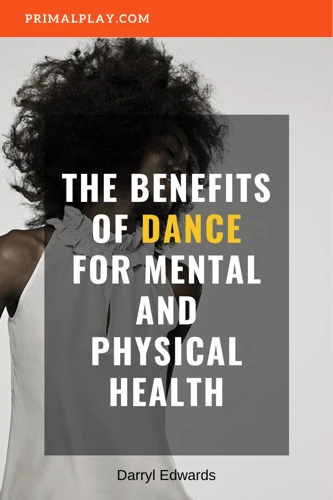
When we think of dance, we may imagine it as just a physical activity. However, it’s important to note that dancing has a profound impact on our mental health as well. This is especially true for folk dance, which not only provides a fun and engaging way to stay physically active, but also incorporates cultural elements, music, and community engagement. Through folk dance, individuals can experience a variety of mental health benefits, including stress reduction and improved mood, improved cognitive function, and increased social connection and confidence. So let’s further explore the mental health benefits of folk dance and how it can improve overall well-being.
Stress Reduction and Improved Mood
Folk dance is an excellent way to reduce stress and boost mood. It combines physical activity with rhythm and music, which creates a sense of joy and relaxation. Research shows that dancing releases endorphins – the body’s natural feel-good chemicals, which help to reduce stress and improve mood.
Folk dance often involves dancing in a group, which provides an opportunity for social interaction and support. This can further enhance the benefits of stress reduction and improved mood, as individuals feel a sense of belonging and connection with others.
Folk dance is also an excellent way to distract the mind from negative thoughts and worries. Researchers have found that when individuals engage in physical activity and focus on their movements, they experience a sense of mindfulness and relaxation. This can further enhance stress reduction and improve overall mental well-being.
Folk dance is an enjoyable and effective way to improve both physical and mental health. It offers a unique combination of physical activity, music, and social interaction that can have a positive effect on stress reduction and mood improvement.
| Benefits of Folk Dance for Stress Reduction and Mood Improvement |
|---|
| Release of endorphins – the body’s natural feel-good chemicals |
| Opportunity for social interaction and support |
| Distraction from negative thoughts and worries |
If you’re looking for more information about folk dance, take a look at these tips for preserving folk dance traditions, learn more about traditional attire, discover the benefits of dancing in a circle in this article, or find out about popular folk dance festivals and gatherings. You can also learn about the role of music in folk dance, including the use of traditional instruments and rhythms, in this guide.
Improved Cognitive Function
Folk dancing has been proven to have numerous physical and mental health benefits. In particular, it has been found to improve cognitive function. The cognitive benefits of folk dancing are numerous and varied. Here are some of the ways in which it can improve your brain function:
| Benefit | Description |
|---|---|
| Increased Brain Connectivity | Folk dances involve complex movements that require coordination and communication between different parts of the brain. As such, they can help to increase the connectivity between different parts of the brain, leading to improved cognitive function. |
| Better Memory Retention | Folk dancing requires learning and remembering complex dance routines, which can help to improve memory retention. This is especially true for older adults, who may be at risk of developing conditions such as dementia. |
| Increased Creativity | Folk dancing can increase creativity by encouraging individuals to express themselves through dance. This can help to activate the right hemisphere of the brain, which is responsible for creativity and imagination. |
| Improved Attention and Focus | Folk dancing requires individuals to focus on the dance steps and movements, which can help to improve attention and focus. This can carry over into other activities, such as work or school, leading to improved performance. |
| Better Problem-Solving Skills | Folk dancing can help to improve problem-solving skills by requiring individuals to think on their feet and make adjustments on the fly. This can help to increase cognitive flexibility, which is an important component of problem-solving. |
The cognitive benefits of folk dancing are numerous and varied. By improving brain connectivity, memory retention, creativity, attention and focus, and problem-solving skills, folk dancing can help to improve cognitive function and promote overall brain health.
Increased Social Connection and Confidence
Participating in folk dance can lead to increased social connection and confidence. Dancing in a group setting provides an opportunity for individuals to interact and connect with others who share a common interest. This can be especially beneficial for individuals who may feel isolated or lonely.
Benefits of increased social connection:
- Reduced feelings of loneliness and depression
- Improved self-esteem and sense of belonging
- Opportunity to meet new people and expand social network
Folk dance often involves partner dancing, which can lead to increased physical touch and intimacy with others. This physical connection can also lead to feelings of trust and closeness with dance partners and group members.
Benefits of increased confidence:
- Improved body image and self-perception
- Increased willingness to take social risks and try new activities
- Enhanced communication and social skills
Participating in folk dance can offer individuals the opportunity to connect with others and build self-confidence, leading to improved overall well-being.
Benefits for Specific Populations
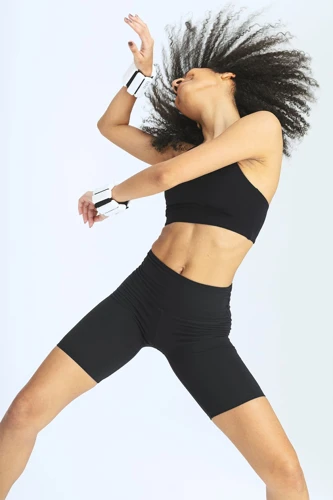
When it comes to folk dance, its benefits go far beyond just physical fitness and mental well-being. In fact, many specific populations can benefit greatly from incorporating folk dance into their daily routine. From the elderly to children, adolescents, and pregnant women, folk dance can provide a range of benefits unique to each group. In this section, we will explore the advantages of folk dance for these specific populations and how it can improve their overall health and well-being. So, let’s take a closer look!
Elderly
As people age, it’s common for their physical and mental health to deteriorate. However, folk dance can be a great form of physical exercise and social connection for elderly individuals. Here are some ways that folk dance can benefit the elderly:
- Improvement in range of motion: As we age, our muscles and joints become stiffer, making it more difficult to move around freely. However, folk dance involves a variety of movements that can help improve range of motion.
- Reduced risk of falls: Falls are a common and serious problem for elderly individuals. The balance and coordination required for folk dance can help reduce the risk of falls.
- Increased social engagement: Elderly individuals often face social isolation and loneliness, which can have negative health consequences. Folk dance classes provide a fun and social environment that can help combat loneliness and increase social connection.
- Mental stimulation: Folk dance involves learning and remembering dance steps, which can help improve cognitive function and memory in elderly individuals.
- Mood improvement: Regular physical exercise like folk dance has been shown to improve mood and reduce symptoms of depression and anxiety in elderly individuals.
It’s important for elderly individuals interested in trying folk dance to consult with their healthcare provider first, especially if they have any medical conditions or physical limitations. Additionally, they should start slowly and choose a style of dance that is appropriate for their fitness level and mobility.
Children and Adolescents
Research has shown that children and adolescents benefit greatly from participating in folk dance. Here are some of the ways in which folk dance can positively impact their physical and mental wellbeing:
| Physical Benefits | Mental Health Benefits |
|---|---|
| Improves balance and coordination | Reduces anxiety and depression |
| Increases physical activity and decreases sedentary behavior | Bolsters self-esteem and confidence |
| Strengthens bones and muscles | Enhances social skills and interaction with peers |
| Improves cardiovascular health | Fosters creative expression and imagination |
Children and adolescents who participate in folk dance are able to develop fundamental motor skills such as balance and coordination. They are able to increase their physical activity levels which can lead to stronger bones and muscles as well as enhanced cardiovascular health.
Beyond the physical benefits, folk dance can also have a significant impact on the mental health of children and adolescents. It has been shown to reduce anxiety and depression, while also bolstering self-esteem and confidence. Participation in folk dance can also help children and adolescents enhance their social skills and interact more effectively with their peers.
Folk dance provides an opportunity for creative expression and imagination. Children and adolescents are able to express themselves artistically through different styles of dance, which in turn can lead to increased self-awareness and personal growth.
In short, participating in folk dance can have numerous benefits for children and adolescents both physically and mentally, making it a great activity for them to pursue.
Pregnant Women
Pregnancy is a special time in a woman’s life, but it can also bring physical and emotional challenges. Folk dance can be a great way for pregnant women to stay active and healthy while also enjoying the benefits of dance.
Physical Benefits: Folk dance can improve overall fitness levels, which can be especially beneficial during pregnancy. Keeping active can help to reduce the risk of gestational diabetes, hypertension, and excessive weight gain. Dancing can also strengthen the pelvic floor muscles, which can help to prepare for a smoother childbirth experience.
Mental Health Benefits: Pregnancy can come with its fair share of emotional ups and downs. Folk dance can offer a great outlet for reducing stress and anxiety, as well as improving mood and self-esteem. Participating in group dance classes can also help to build a sense of community and support among pregnant women.
Precautions: While folk dance can be a safe and enjoyable form of exercise during pregnancy, it’s important to take precautions to avoid injury. Women should always check with their healthcare provider before starting a new exercise routine during pregnancy. Additionally, they should avoid movements that put strain on the abdominal muscles or involve sudden changes in direction.
The following table outlines some safety tips for pregnant women who want to try folk dance:
| Tip | Description |
|---|---|
| Avoid high-impact movements | Pregnant women should avoid movements that involve jumping or running |
| Modify movements as needed | Women should modify movements that cause discomfort or strain, such as deep squats or twists |
| Stay hydrated | Drinking plenty of water before, during, and after dance class can help to prevent dehydration and overheating |
| Wear supportive footwear | Pregnant women should wear comfortable, supportive shoes that provide good traction to prevent slips or falls |
Folk dance can be a safe and enjoyable form of exercise for pregnant women. By taking precautions and modifying movements as needed, women can experience the physical and mental benefits while also staying safe and healthy during this special time.
Folk Dance as a Form of Therapy
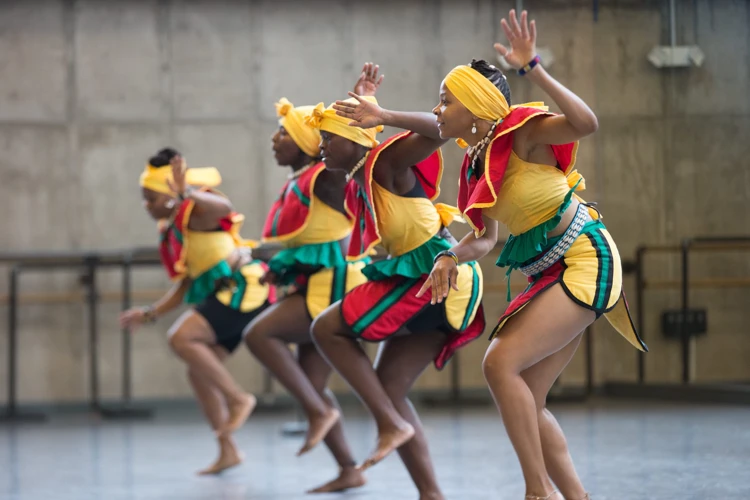
Folk dance is not just a fun activity, it is also a form of therapy that can improve both physical and mental health. Many people have found relief from conditions such as Parkinson’s disease, depression, and anxiety through the movement and socialization of folk dance. Research studies have shown that folk dance can be used as a form of physical and mental therapy for people of all ages and abilities. In this section, we will explore the various ways in which folk dance can be used therapeutically, including physical therapy, mental health therapy, and more.
Physical Therapy
Physical therapy is a crucial aspect of healthcare that aids individuals in regaining their physical functionality and independence. In this regard, folk dance has been shown to be an effective form of physical therapy, especially for those with musculoskeletal or neurological disorders. Here are some ways in which folk dance can be used in physical therapy:
1. Improved Range of Motion: Through the various dance movements involved in folk dance, individuals can improve their range of motion, which is crucial for individuals recovering from injuries or surgeries. Different dance styles require different levels of flexibility, thus providing patients with a wide range of activities to choose from.
2. Increased Strength: Folk dancing also helps to increase strength in various muscle groups, including the upper and lower body, as well as the core. By engaging in the various dance movements, individuals can improve their physical strength, which can make it easier to perform daily activities.
3. Improved Balance and Coordination: Many folk dances require precise movements and coordination between different body parts. Engaging in these dances helps to improve balance, coordination and posture in individuals, which can be particularly important for those with Parkinson’s disease or other neurological disorders.
4. Pain Management: Physical therapy typically involves exercises that can be painful or uncomfortable, but folk dance can make the process more enjoyable. Dancing releases endorphins, which are natural pain relievers, and can help individuals manage their pain better.
5. Social Interaction: Folk dancing is often done in groups, which can help to alleviate feelings of isolation or loneliness in patients who are recovering from injuries or surgeries. Interacting with other individuals, having fun together, and achieving common goals can promote social connections and improve overall well-being.
Folk dance is an excellent form of physical therapy that can help individuals recover from injuries or surgeries, improve their functional mobility, and maintain their independence. It is a fun and enjoyable activity that can help individuals feel better both physically and mentally.
Mental Health Therapy
Folk dance can also be used as a form of mental health therapy for individuals struggling with various mental health conditions. This therapeutic intervention has been known to improve mood, reduce stress and anxiety, as well as promote social interaction and engagement.
One significant benefit of folk dance as a mental health therapy is its ability to reduce stress levels. Studies have shown that engaging in physical activity like dancing can help reduce cortisol levels in the body, which is the hormone associated with stress. This reduction in stress levels can give individuals a sense of calmness and relaxation.
Folk dance can also help individuals who struggle with anxiety and depression. As folk dance involves music, coordination with others, and a focus on the current moment, it can lead to greater self-awareness and a decrease in rumination, which is a tendency for individuals to dwell on negative thoughts. A study published in The Arts in Psychotherapy found that regular folk dance sessions were associated with a decrease in depressive symptoms in adults.
Folk dance therapy can also provide individuals with an opportunity to interact with others and develop social connections. Especially for individuals struggling with social anxiety, engaging in activities like folk dancing in a group setting can help them overcome their anxiety and develop a sense of belonging.
Finally, folk dance therapy can also be an effective form of therapy for individuals who have experienced trauma or have post-traumatic stress disorder (PTSD). Dancing can help individuals process their emotions and experiences in a nonverbal way, which can be an important aspect of trauma therapy. A study published in Psychological Trauma found that folk dance therapy was effective in reducing PTSD symptoms in survivors of sexual assault.
Folk dance therapy can provide individuals struggling with various mental health conditions with a safe and enjoyable way to reduce stress levels, decrease depressive symptoms, develop social connections, and process trauma. It can be used as a complementary therapy alongside traditional forms of therapy.
Choosing a Folk Dance Style
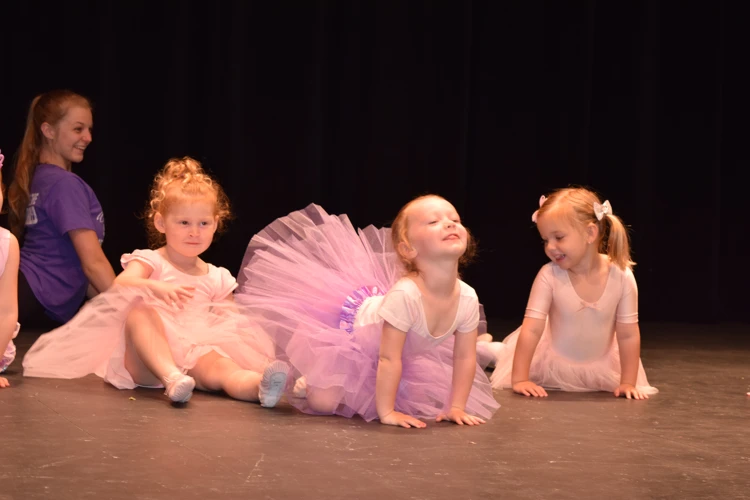
When it comes to choosing a folk dance style, there are many options available, each with its unique history, traditions, and characteristics. Whether you prefer fast-paced movements or more smooth and graceful choreography, there is a folk dance style that can suit your needs and preferences.
Consider your cultural heritage: One approach to choosing a folk dance style is to explore your own cultural heritage. Look into the traditional dances that are associated with your ancestral roots and learn more about their history and significance. This can be an excellent way to connect with your cultural heritage and explore your identity.
Explore different regions: Folk dances have developed in various regions around the world, from the lively dances of Latin America to the intricate footwork of Eastern Europe. Consider exploring different regions and their unique dance styles to discover new and exciting forms of expression.
Consider your skill level: It’s also essential to consider your skill level when choosing a folk dance style. While some dances may be relatively easy to learn, others may require more significant amounts of practice and patience. Don’t be afraid to start with beginner classes or workshops to build your skills gradually.
Pick a dance style that speaks to you: Ultimately, the most crucial factor in choosing a folk dance style is to pick one that speaks to you on a personal level. Whether you are drawn to the vibrant energy of flamenco or the smooth, sweeping moves of the waltz, choose a dance style that you genuinely enjoy and find meaningful.
With so many different types of folk dance styles to choose from, it can be challenging to know where to begin. However, by considering your cultural background, exploring different regions, considering your skill level, and picking a dance style that speaks to you, you will be well on your way to discovering the joys and benefits of folk dance.
Getting Started with Folk Dance
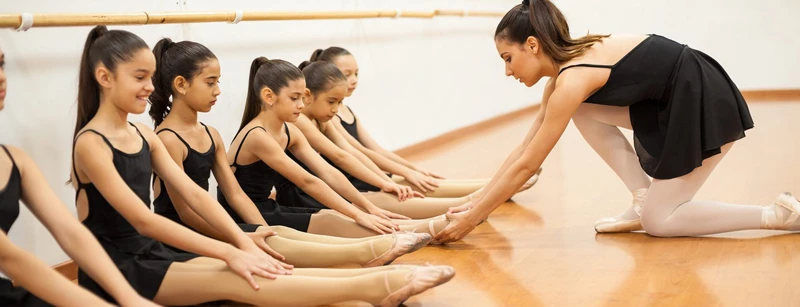
One of the great things about folk dance is that it’s accessible to almost anyone, regardless of age or fitness level. If you’re interested in trying out this fun and rewarding activity, there are a few things you can do to get started.
Find a Class or Community Group: The first step is to find a group or class that teaches folk dance in your area. Check with local community centers, dance studios, or cultural associations to see if they offer classes or events. You can also check online for groups or forums that connect folk dancers.
Dress Appropriately: When you attend your first class or event, make sure to dress appropriately for the occasion. Comfortable, breathable clothing that allows for easy movement is ideal. Many folk dance styles involve twirling or spinning, so avoid overly loose or flowing garments that may get tangled or caught.
Get Familiar with the Music: Folk dances are typically performed to traditional folk music from around the world. Listening to the music beforehand can help you get a feel for the rhythm and tempo of the dance, making it easier to follow along when you start dancing.
Watch and Learn: Don’t worry if you don’t pick up the steps right away. Many folk dance styles involve complex footwork and intricate movements, so it’s normal to feel a bit overwhelmed at first. Try to watch and imitate the instructor and more experienced dancers in the group until you feel more comfortable with the steps.
Be Patient: Folk dance is a skill that takes time and practice to master. Don’t get discouraged if you don’t get the hang of a particular dance right away. Focus on enjoying the music, moving your body, and connecting with your fellow dancers. With time and practice, you’ll start to feel more confident, graceful, and coordinated on the dance floor.
Have Fun: Most importantly, remember to have fun! Folk dance is a social and joyful activity that celebrates cultural diversity and community. Whether you’re dancing with friends, family, or strangers, try to let go of your inhibitions and immerse yourself in the music and movements of the dance. Not only will you get a workout, but you’ll also make new friends and memories that will last a lifetime.
Precautions and Safety Tips

When it comes to any form of physical activity, it is important to take necessary safety precautions to avoid injury. Folk dance is no exception. Here are some safety tips to keep in mind before you start dancing:
Consult a Doctor: If you have any pre-existing medical conditions, it is important to consult your doctor before starting any new exercise program, including folk dance. They can advise you on any potential risks specific to your condition and make recommendations on how much to participate.
Warm Up and Cool Down: Like any physical activity, it is important to warm up before starting the dance and cool down after the dance is over. Take a few minutes to stretch and gradually get your body ready for more intense movement.
Wear Proper Shoes: Folk dance typically involves a lot of movement, jumping, and turning, so it is important to wear comfortable shoes with good support to prevent injuries such as ankle sprains. Avoid dancing in sandals or flip-flops, instead opt for sturdy athletic shoes.
Stay Hydrated: Drink plenty of water before, during, and after dance sessions to keep your body hydrated and prevent cramps.
Listen to Your Body: If you begin to feel dizzy, shortness of breath, or experience any pain or discomfort, stop immediately to avoid injury.
Choose an Appropriate Dance Style: Different folk dance styles have varying levels of intensity, so it is important to choose a style that matches your fitness and skill level. Avoid high-impact dance styles if you have a pre-existing injury or have not exercised in a long time.
By taking the necessary precautions and knowing your limits, you can enjoy the many physical and mental benefits of folk dance safely and effectively.
Frequently Asked Questions About Folk Dance
As folk dance gains popularity as a form of physical activity and social connection, some questions may arise. Here are some frequently asked questions about folk dance:
What is folk dance?
Folk dance refers to traditional cultural dances performed by people of a specific region, often accompanied by community gatherings and celebrations. These dances typically involve a series of simple steps and movements that are repeated in patterns.
What are the different types of folk dance?
There are countless types of folk dance from around the world, each with their own distinct music, movements, and cultural significance. Some popular examples include salsa, flamenco, square dancing, and line dancing.
Can anyone learn folk dance?
Yes! Folk dance is a fun and accessible activity that can be enjoyed by people of all ages, fitness levels, and skill levels. Many folk dance communities offer beginner classes and workshops, making it easy to get started.
What are the benefits of folk dance?
Folk dance offers a variety of physical and mental benefits, including improved cardiovascular health, increased flexibility and strength, stress reduction, and improved cognitive function. It also provides opportunities for social connection and confidence-building.
Do I need a partner to do folk dance?
Not necessarily! While some folk dances are performed with a partner or in a group, many can be done solo. Additionally, some folk dance communities welcome singles and provide opportunities to meet other dance enthusiasts.
Is there a specific dress code for folk dance?
This varies depending on the cultural and regional traditions of the dance. However, comfortable clothing and shoes with good support are recommended to allow for ease of movement and prevent injury.
What precautions should I take before starting folk dance?
As with any physical activity, it’s important to consult with a healthcare professional before starting a new exercise regimen. Additionally, warming up and cooling down before and after dance sessions can help prevent injury. Be sure to listen to your body and take breaks as needed.
Folk dance is a fun and rewarding way to achieve physical fitness and social connection. By exploring different styles and communities, you can enrich your cultural understanding and have fun while doing it.
Conclusion
In conclusion, it is evident that folk dance is an enjoyable and accessible form of physical activity that can provide numerous health benefits. By incorporating folk dance into our daily routines, we can improve our cardiovascular health, increase our flexibility and strength, manage our weight, and reduce the risk of obesity. Additionally, folk dance can positively impact mental health by reducing stress levels, improving mood, cognitive function, and social connection.
Moreover, folk dance is beneficial for specific populations such as the elderly, children and adolescents, and pregnant women, with benefits ranging from improved balance, flexibility, and coordination to reduced pain and anxiety during childbirth. In some cases, folk dance can also be used as a form of therapy, whether physical or mental, to improve overall well-being.
As with any physical activity, it is important to take precautions and safety measures to prevent injury while engaging in folk dance. Moreover, choosing the appropriate dance style and skill level is essential to ensure enjoyment and prevent frustration.
In summary, folk dance is a fun and low-impact physical activity with numerous health benefits. It can positively impact our physical and mental health, and be a great way to connect with others in a social setting. With proper precautions and safety measures, anyone can enjoy the physical and mental benefits of folk dance.
Preguntas frecuentes
Question 1?
What is folk dance and what makes it different from other dance styles?
Question 2?
Can folk dance help me lose weight?
Question 3?
Is folk dance suitable for people with mobility issues?
Question 4?
Can children take part in folk dance classes?
Question 5?
Is it necessary to have a partner to participate in folk dancing?
Question 6?
Can folk dance be used as a form of therapy?
Question 7?
What are some popular types of folk dance?
Question 8?
What should I wear to a folk dance class?
Question 9?
Do I need any special equipment to start folk dancing?
Question 10?
What should I do if I feel pain or discomfort while dancing?

